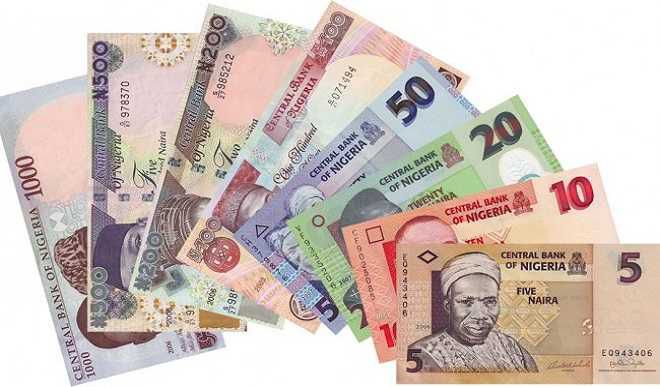The naira slid sharply in currency markets on the heels of the Central Bank of Nigeria’s Monetary Policy Committee decision to cut the benchmark rate by 50 basis points to 27.00 per cent, a move announced in the bank’s communique after the two day MPC meeting on September 23. Traders and price trackers reported marked moves within hours of the announcement as markets sought to price the implications of looser monetary policy and a narrower interest rate corridor.
Market trackers reported different quotes for the parallel market this morning. Nairametrics recorded the naira at 1,493 to the dollar shortly after trading opened, while cash market and Bureau de Change trackers showed slightly weaker prints in the 1,500 to 1,520 range. Official daily rates published on the Central Bank site and FMDQ showed the official NFEM closing rate near 1,487, underlining the persistent gap between official windows and street or parallel prices. Those variances matter because businesses and households see different realities depending on which market they access.
The MPC’s policy package was larger than the single number. The committee narrowed the asymmetric corridor around the MPR to plus 250 and minus 250 basis points and reduced the cash reserve ratio for commercial banks to 45 per cent from higher levels. The communique said the moves were predicated on a sustained disinflation path over recent months and a need to support the recovery. Markets responded to the policy change more on tone than on headline numbers, with traders immediately reassessing yields, foreign exchange demand and the pace of future easing.
This latest wobble is part of a volatile year for the currency. Since the currency reforms and subsidy removal that reshaped foreign exchange dynamics, the naira has swung widely across official and parallel windows. Last year the currency touched much weaker levels in both official and interbank markets, prompting repeated interventions and emergency dollar sales by the central bank. In September of 2024, for example, official and window rates briefly recorded intraday extremes that reflected severe liquidity stress and large premium pressures in the black market. Those historic swings remain fresh in traders’ minds and feed sensitivity to any policy signal that could change yield spreads or foreign inflows.
Economy participants emphasized that the immediate cause of today’s move was market repricing of monetary accommodation. Traders said liquidity in the banking system had surged in recent sessions, reducing the need for very high policy rates, but also making it easier for some participants to take short term foreign exchange positions. Reuters reported market liquidity rising sharply after the MPC and noted traders had expected a larger cut. The combination of a smaller than hoped for signal on future tightening and the mechanical effects of reduced policy yields encouraged arbitrage and heavier demand in certain cash markets.
The split between official windows and parallel markets remains a core vulnerability. Official average rates reported by FMDQ and CBN serve as references for large corporate transactions, for sovereign receipts and for monetary statistics. Many small businesses and retail importers however rely on Bureau de Change and parallel quotes for immediate transactions. When those markets diverge sharply, import costs, pharmaceutical shipments and food prices adjust quickly and unevenly, pressuring margins and household budgets. Today’s mixed quotes therefore translate directly into uncertainty for companies that must budget in dollars while collecting revenue in naira.
Analysts pointed to three structural issues that explain why the naira still reacts violently to policy tweaks. First, dollar supply remains sensitive to oil receipts and to foreign portfolio flows. When crude receipts slow or when bond yields fall, the cushion of foreign exchange inflows weakens. Second, the fiscal and external financing mix still leaves the country exposed to short term shocks because non oil export receipts are limited. Third, market segmentation persists. Despite reforms aimed at unifying markets, different windows continue to produce different prices, and that segmentation feeds arbitrage that can widen short term moves. These are not speculative concerns. They were referenced in official briefings, in market commentary and in central bank background documents over the past year.
Policy implications are immediate. A lower policy rate reduces borrowing costs for banks and firms if the transmission works, but it also reduces the interest differential that attracted some foreign portfolio capital into local debt. The CBN will now have to manage the trade off between supporting growth and preserving exchange rate stability. To do so the bank may rely more on foreign exchange market interventions, on liquidity operations and on clearer signals to international investors about the durability of reserves. Officials said they would act carefully and monitor inflation and external flows closely.
For ordinary Nigerians the practical effect is familiar and immediate. Import dependent firms signal higher procurement costs within days. Retail prices for key goods adjust more slowly but the direction is clear when parallel market quotes strengthen. Households watching the exchange rate see not just a number but a forecast of food costs, school fees and transport budgets. The central bank’s communique and the wide range of market quotes published today show why confidence in the currency will depend not only on a single MPC decision but on sustained, transparent management of liquidity, credible fiscal discipline and steady foreign exchange inflows.
Today’s moves will not be the last. Markets will continue to test the new policy regime. The CBN can slow large swings by combining clear guidance, targeted interventions and coordinated fiscal action. Those steps would directly reduce the premium between official and parallel rates and create room for the interest rate reductions that policymakers seek. For now the naira sits between fresh policy direction and the same economic constraints that have driven its volatility for two years. Traders will watch tomorrow as price discovery continues to unfold and as liquidity data and FX flows for the rest of the week come into view.
Samuel Aina

